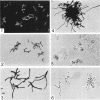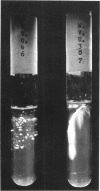Abstract
A comparative study of 64 strains of Actinomyces israelii was done with the use of techniques standardized by the Subgroup on Taxonomy of the Microaerophilic Actinomycetes. Emphasis was placed on the range of variation to assist recognition of clinical isolates and aid in differentiation from Actinomyces-like organisms. None of the strains was positive for catalase or indole, or in the Voges-Proskauer test; 90% were methyl red-positive and 62% were nitrate-positive. Acid was produced from: glucose (100%), xylose (100%), salicin (98%), raffinose (95%), lactose (89%), cellobiose (83%), mannose (78%), arabinose (76%), inositol (58%), mannitol (48%), starch (31%), glycogen (0%), glycerol (0%), and rhamnose (0%). A. israelii can be identified by the fluorescent-antibody method, but there is no single morphological or biochemical characteristic which can be used for its identification. By both fluorescent-antibody and gel-diffusion techniques, the serological classification of A. israelii group D with serotypes 1 and 2 was verified. Eleven serotype 2 strains were compared morphologically, biochemically, and serologically with 53 serotype 1 strains. All but two of the serotype 2 strains produced viscous growth in broth and none fermented arabinose.
Full text
PDF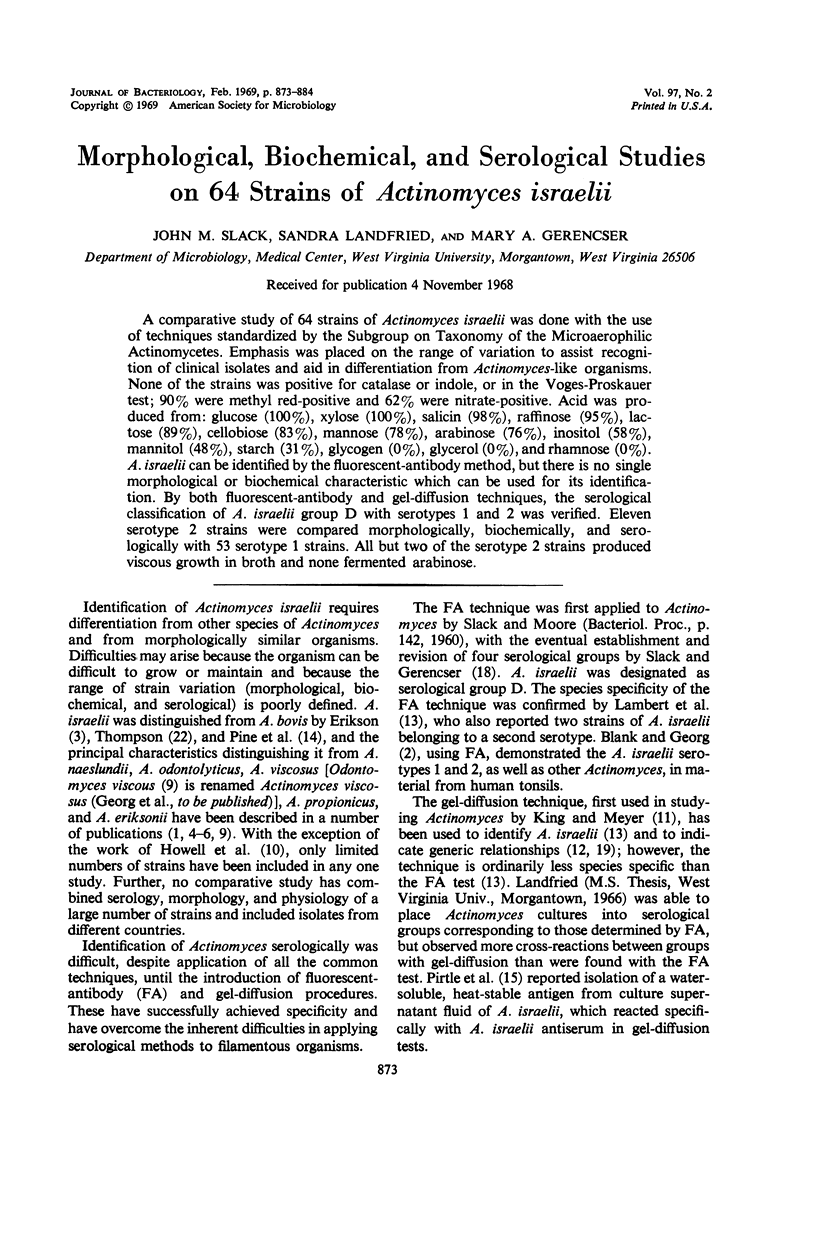
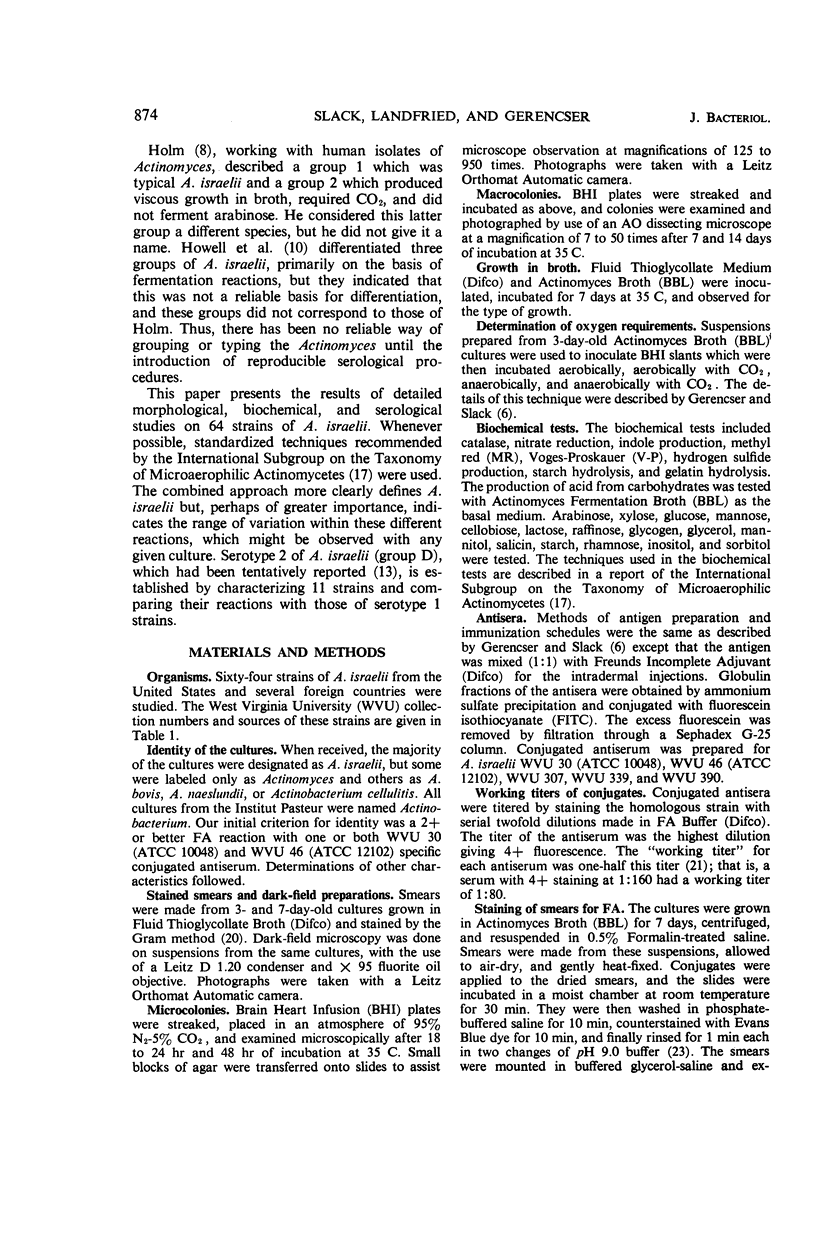
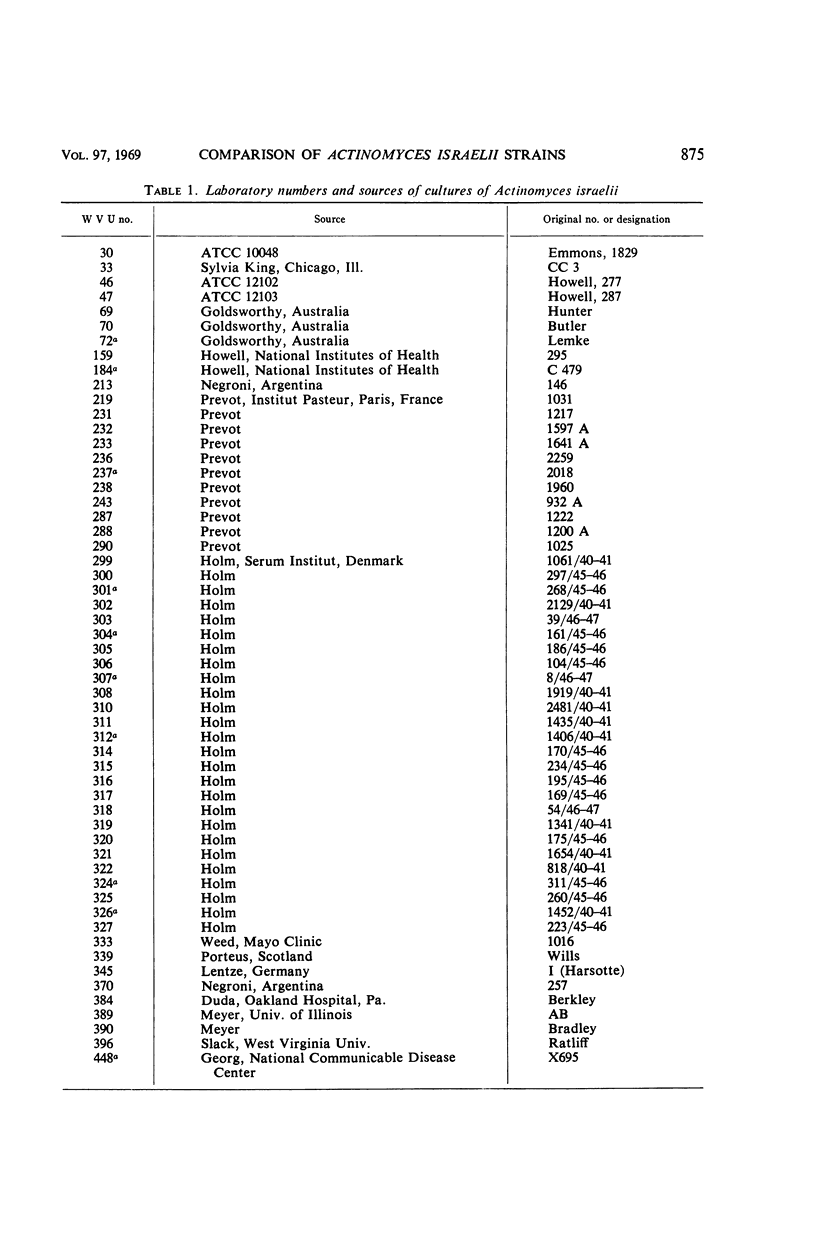
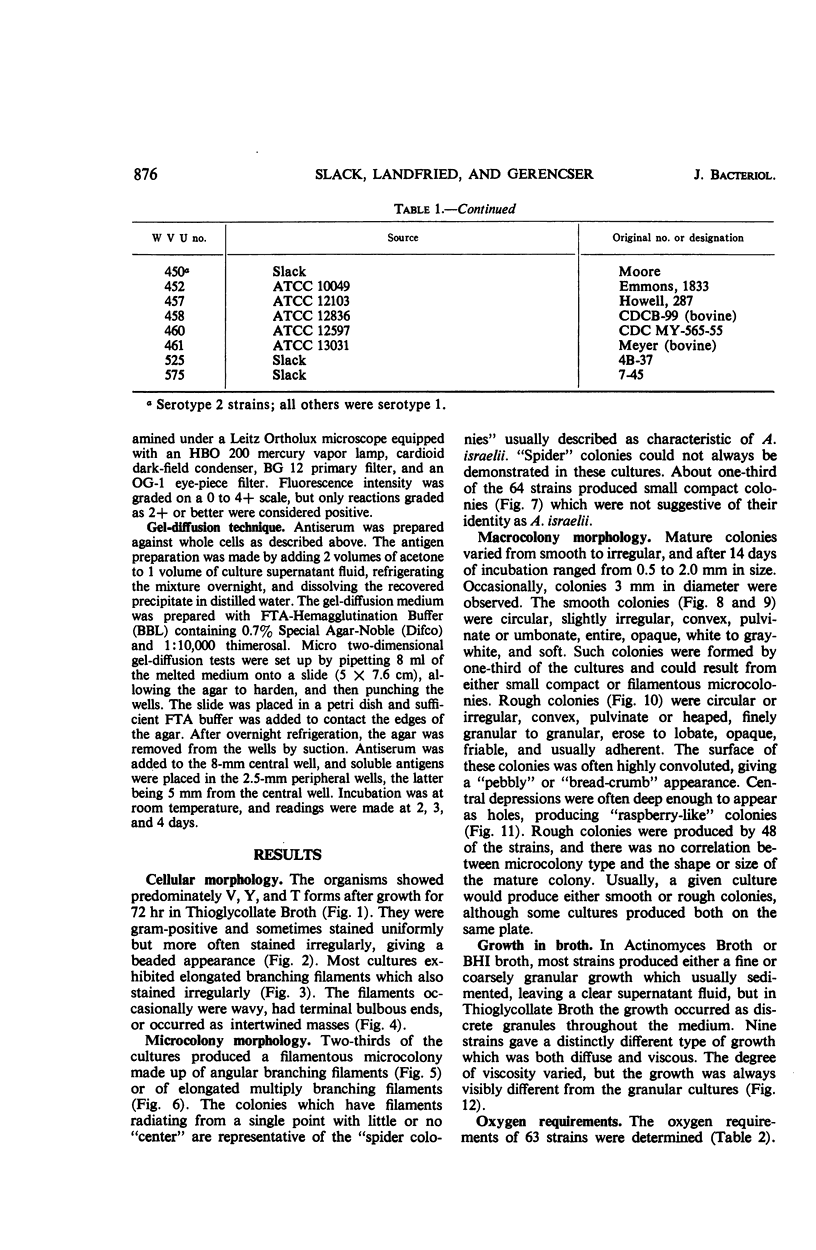
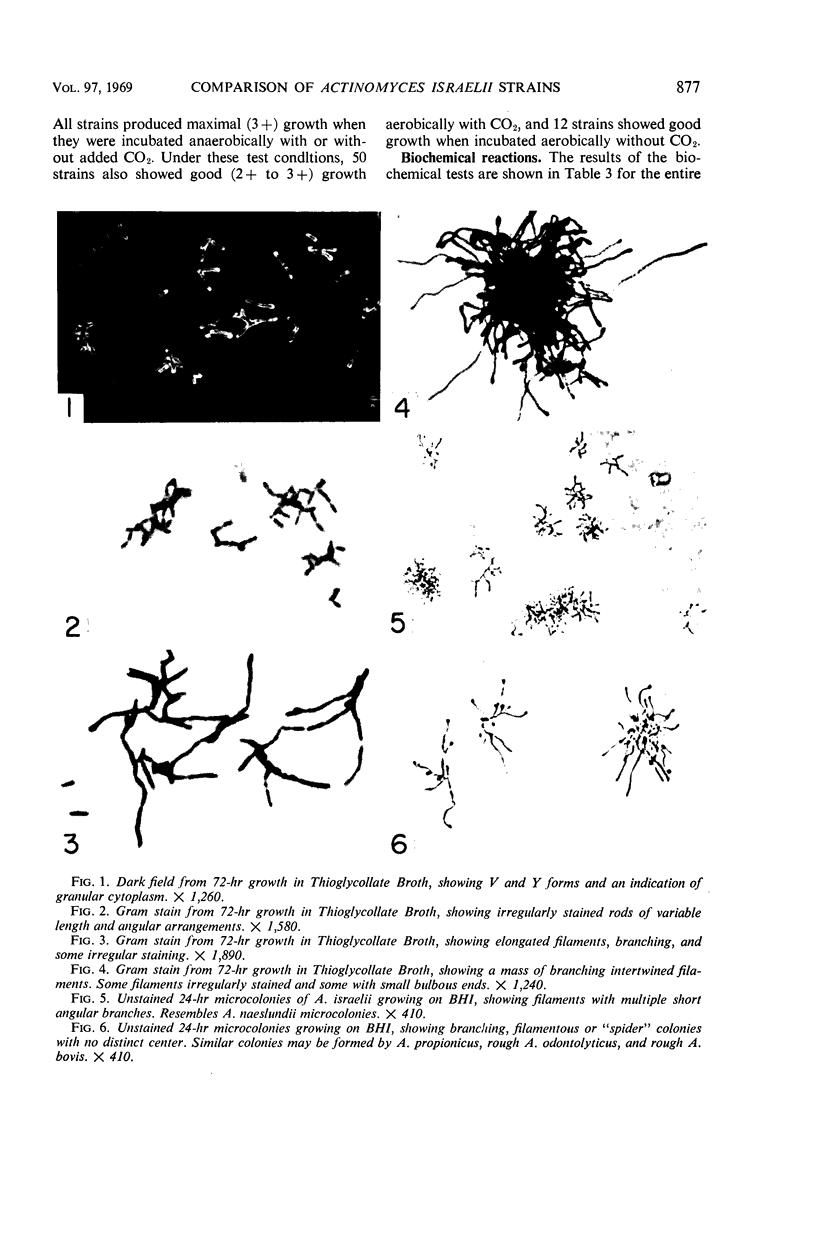
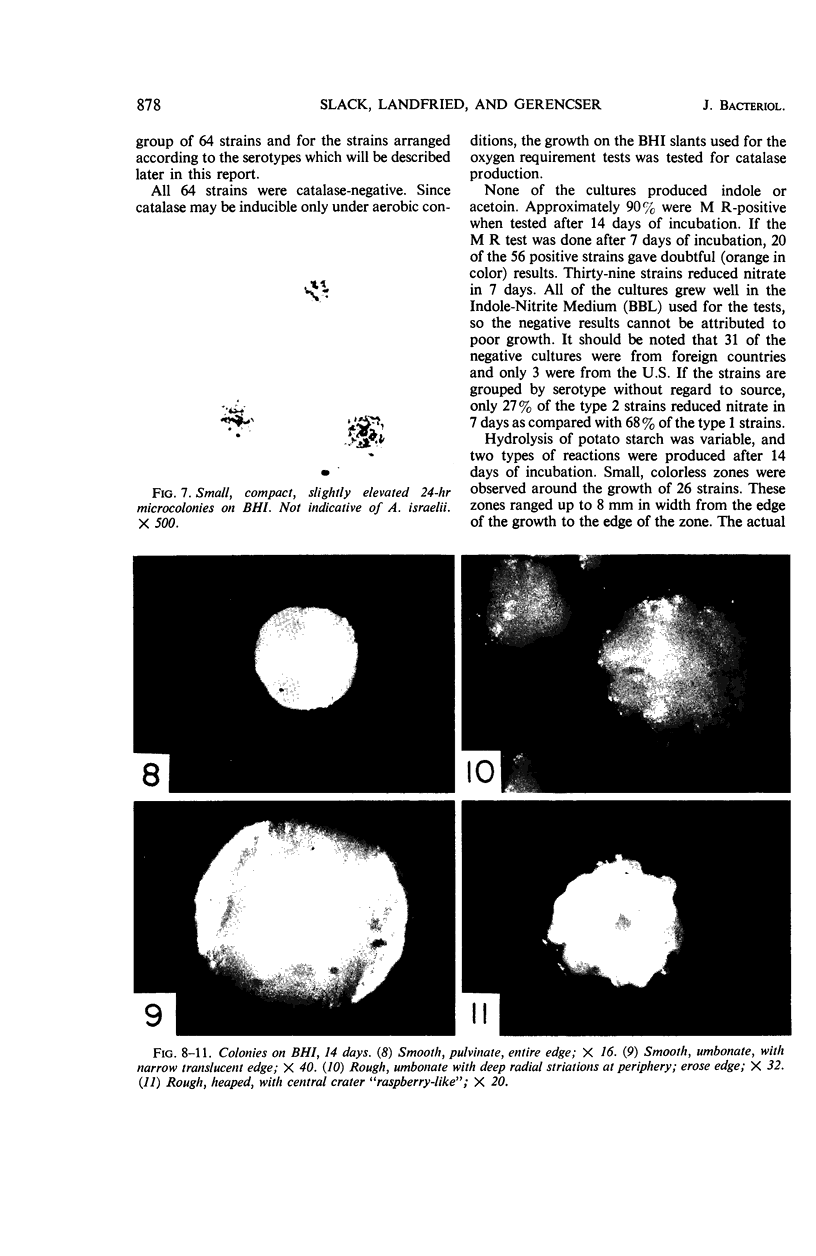
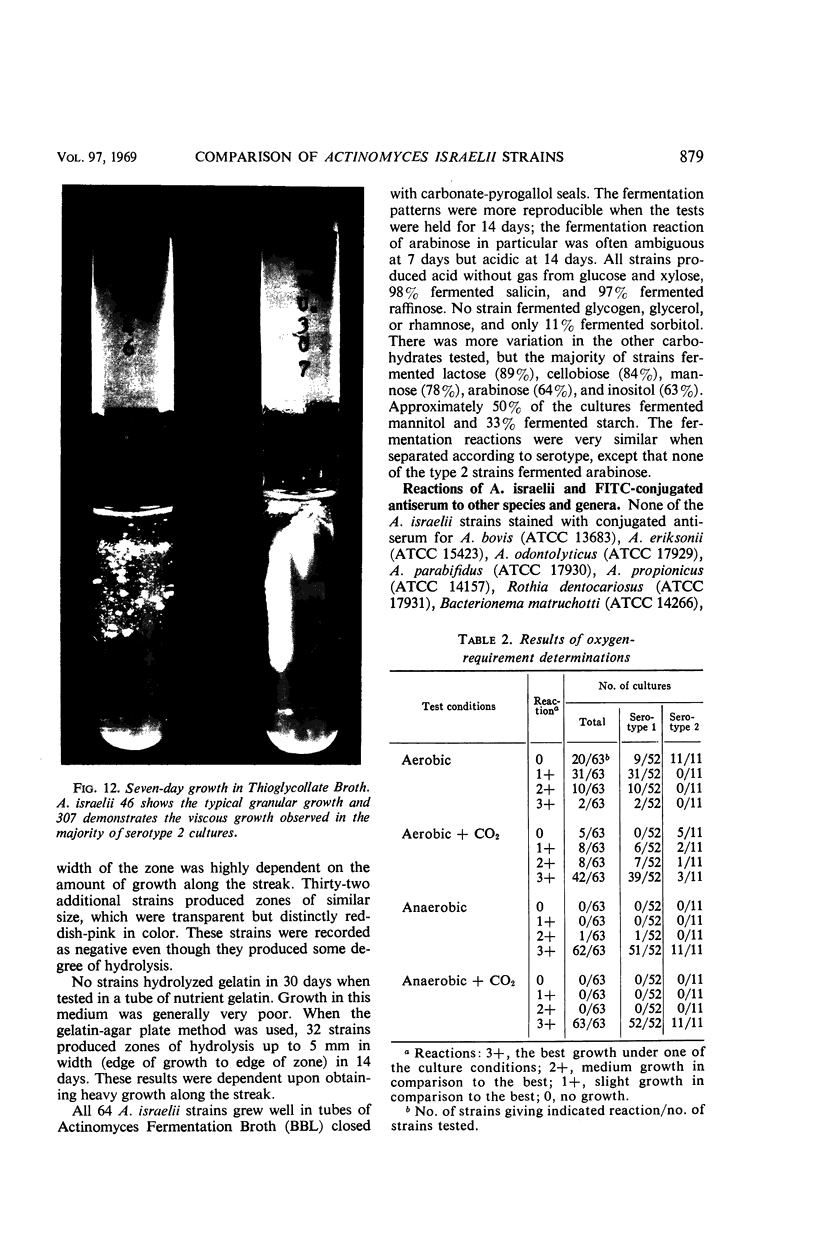
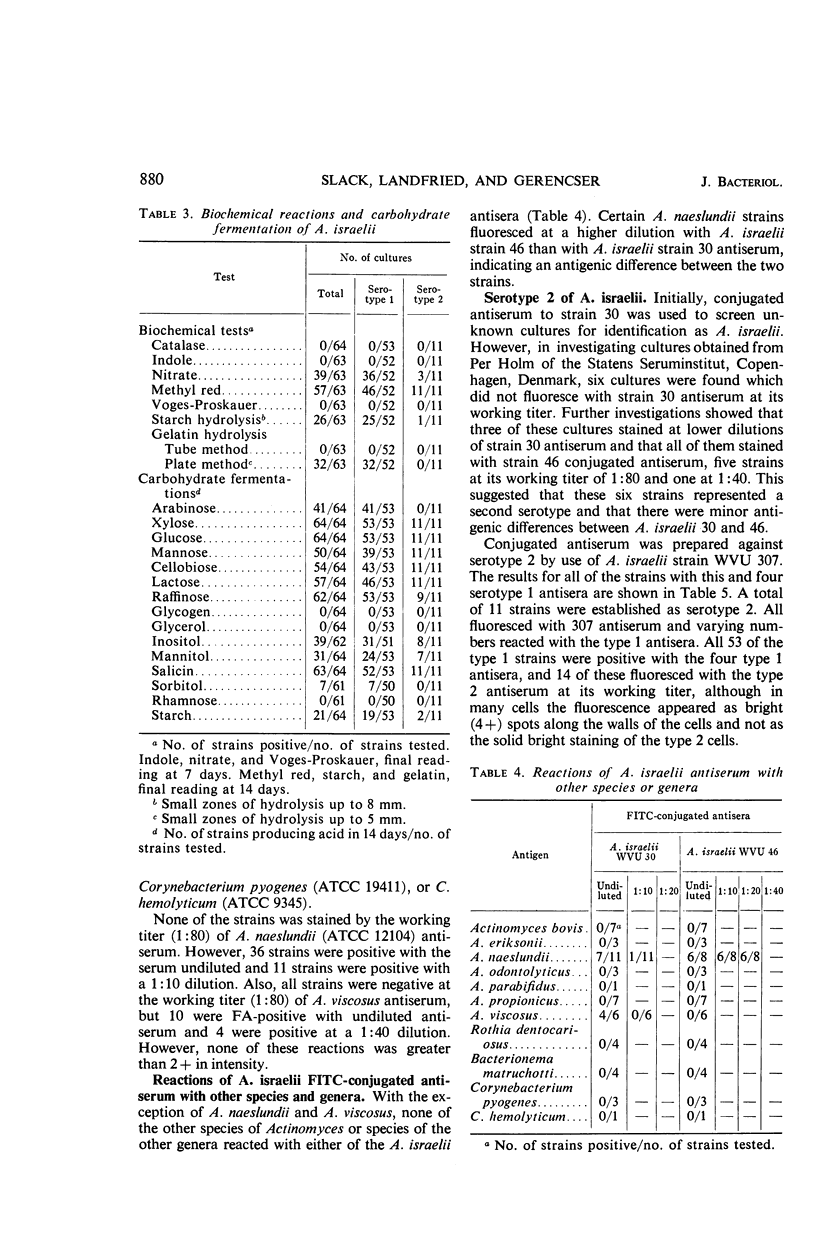

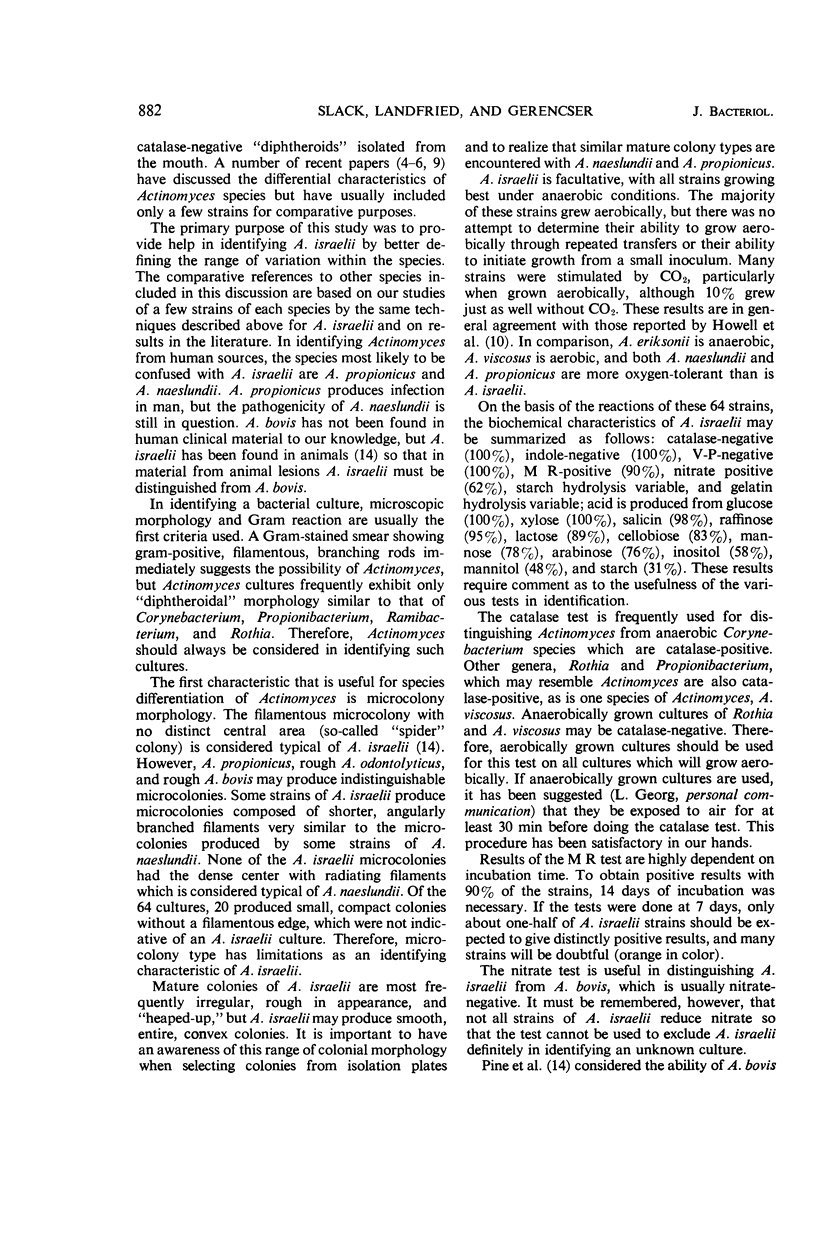
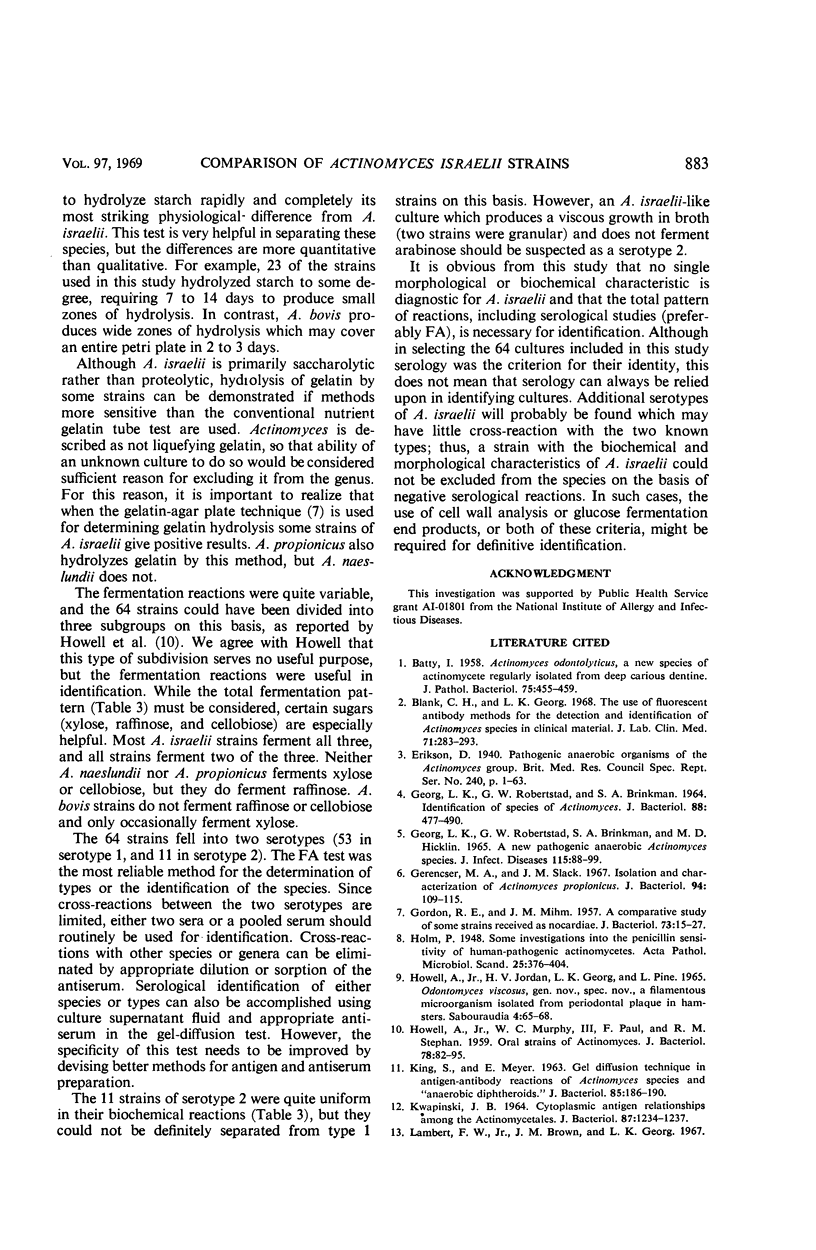
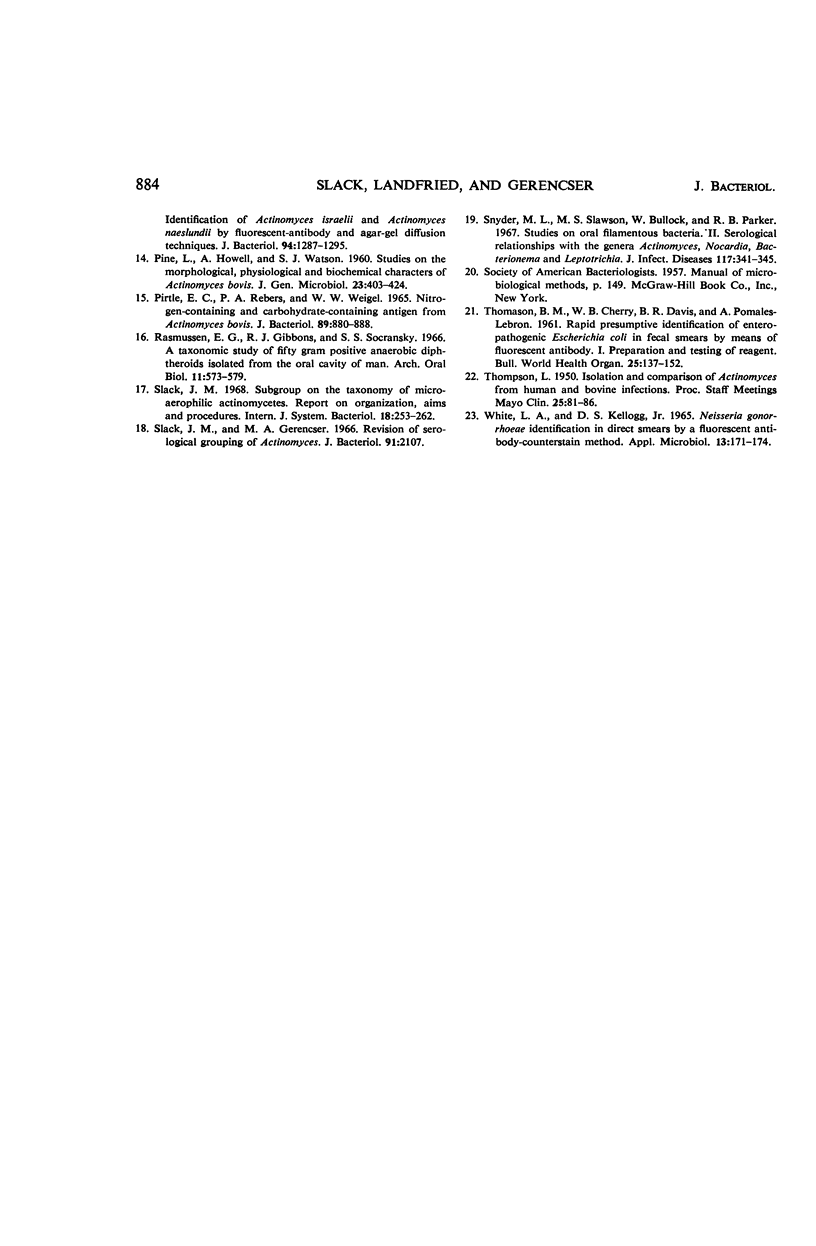
Images in this article
Selected References
These references are in PubMed. This may not be the complete list of references from this article.
- BATTY I. Actinomyces odontolyticus, a new species of actinomycete regularly isolated from deep carious dentine. J Pathol Bacteriol. 1958 Apr;75(2):455–459. doi: 10.1002/path.1700750225. [DOI] [PubMed] [Google Scholar]
- GEORG L. K., ROBERTSTAD G. W., BRINKMAN S. A., HICKLIN M. D. A NEW PATHOGENIC ANAEROBIC ACTINOYCES SPECIES. J Infect Dis. 1965 Feb;115:88–99. doi: 10.1093/infdis/115.1.88. [DOI] [PubMed] [Google Scholar]
- GEORG L. K., ROBERTSTAD G. W., BRINKMAN S. A. IDENTIFICATION OF SPECIES OF ACTINOMYCES. J Bacteriol. 1964 Aug;88:477–490. doi: 10.1128/jb.88.2.477-490.1964. [DOI] [PMC free article] [PubMed] [Google Scholar]
- GORDON R. E., MIHM J. M. A comparative study of some strains received as nocardiae. J Bacteriol. 1957 Jan;73(1):15–27. doi: 10.1128/jb.73.1.15-27.1957. [DOI] [PMC free article] [PubMed] [Google Scholar]
- Gerencser M. A., Slack J. M. Isolation and characterization of Actinomyces propionicus. J Bacteriol. 1967 Jul;94(1):109–115. doi: 10.1128/jb.94.1.109-115.1967. [DOI] [PMC free article] [PubMed] [Google Scholar]
- HOWELL A., Jr, MURPHY W. C., 3rd, PAUL F., STEPHAN R. M. Oral strains of Actinomyces. J Bacteriol. 1959 Jul;78(1):82–95. doi: 10.1128/jb.78.1.82-95.1959. [DOI] [PMC free article] [PubMed] [Google Scholar]
- Howell A., Jr, Jordan H. V., Georg L. K., Pine L. Odontomyces viscosus, gen. nov., spec. nov., a filamentous microorganism isolated from periodontal plaque in hamsters. Sabouraudia. 1965 Jun;4(2):65–68. doi: 10.1080/00362176685190181. [DOI] [PubMed] [Google Scholar]
- KING S., MEYER E. Gel diffusion technique in antigen-antibody reactions of Actinomyces species and "anaerobic diphtheroids". J Bacteriol. 1963 Jan;85:186–190. doi: 10.1128/jb.85.1.186-190.1963. [DOI] [PMC free article] [PubMed] [Google Scholar]
- Kwapinski J. B. Cytoplasmic antigen relationships among the Actinomycetales. J Bacteriol. 1964 May;87(5):1234–1237. doi: 10.1128/jb.87.5.1234-1237.1964. [DOI] [PMC free article] [PubMed] [Google Scholar]
- PINE L., HOWELL A., Jr, WATSON S. J. Studies of the morphological, physiological, and biochemical characters of Actinomyces bovis. J Gen Microbiol. 1960 Dec;23:403–424. doi: 10.1099/00221287-23-3-403. [DOI] [PubMed] [Google Scholar]
- PIRTLE E. C., REBERS P. A., WEIGEL W. W. NITROGEN-CONTAINING AND CARBOHYDRATE-CONTAINING ANTIGEN FROM ACTINOMYCES BOVIS. J Bacteriol. 1965 Mar;89:880–888. doi: 10.1128/jb.89.3.880-888.1965. [DOI] [PMC free article] [PubMed] [Google Scholar]
- Rasmussen E. G., Gibbons R. J., Socransky S. S. A taxonomic study of fifty gram positive anaerobic diphtheroids isolated from the oral cavity of man. Arch Oral Biol. 1966 Jun;11(6):573–579. doi: 10.1016/0003-9969(66)90223-8. [DOI] [PubMed] [Google Scholar]
- Slack J. M., Gerencser M. A. Revision of serological grouping of Actinomyces. J Bacteriol. 1966 May;91(5):2107–2107. doi: 10.1128/jb.91.5.2107-.1966. [DOI] [PMC free article] [PubMed] [Google Scholar]
- Snyder M. L., Slawson M. S., Bullock W., Parker R. B. Studies on oral filamentous bacteria. II. Serological relationships within the genera Actinomyces, Nocardia, Bacterionema and Leptotrichia. J Infect Dis. 1967 Oct;117(4):341–345. doi: 10.1093/infdis/117.4.341. [DOI] [PubMed] [Google Scholar]
- THOMASON B. M., CHERRY W. B., DAVIS B. R., POMALES-LEBRON A. Rapid presumptive identification of entero-pathogenic Escherichia coli in faecal smears by means of fluorescent antibody. 1. Preparation and testing of reagents. Bull World Health Organ. 1961;25:137–152. [PMC free article] [PubMed] [Google Scholar]
- THOMPSON L. Isolation and comparison of Actinomyces from human and bovine infections. Proc Staff Meet Mayo Clin. 1950 Feb 15;25(4):81–86. [PubMed] [Google Scholar]
- WHITE L. A., KELLOGG D. S., Jr NEISSERIA GONORRHOEAE IDENTIFICATION IN DIRECT SMEARS BY A FLUORESCENT ANTIBODY-COUNTERSTAIN METHOD. Appl Microbiol. 1965 Mar;13:171–174. doi: 10.1128/am.13.2.171-174.1965. [DOI] [PMC free article] [PubMed] [Google Scholar]



